Byzantine Period
Byzantion was founded by a Greek colony-Byzas before it was conquered by a Roman Emperor . This little sea shore town -Byzantion flourished to a capital of the empire of Constantine the Great who reunited the West & East Rome under his rule and renamed the city as ‘’Constantinople’’. Constantine had been a pagan before he converted to the Christianity. After Constantine died, his successor Constantinus decided that Byzantine needed his own Pantheon. It was Hagia Sophia– Sophia of God, Holy Wisdom; that is the second person of Trinity: Christ.
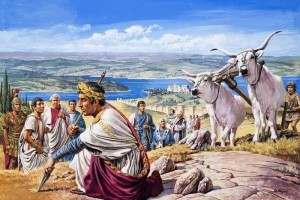
The Emperor Constantine took his spear and traced the new boundaries of his ever more splendid capital city of Byzantium, by Roger Payne.
The first name of the Church was ‘’Megale Ekklesia’’ which means ‘’the Grand Church’’. The first Hagia Sophia was built in 360. It was a wooden-roofed basilica, built on the site of a pagan temple. On the contrary to the popular belief, it was donated by Constantinus II not by Constantine the Great.
When its roof was burned by a fire in 404 and destroyed mostly in a second fire in 414, a great believer of orthodoxy Theodisius II dedicated another church in 415. Among the ruins of Theodisius’ church, you can see the architrave of twelve sheep that represents the twelve apostles of Christ in front of the monumental entrance.
The people of Byzantion was so pious at those time that Saint Gregory of Nyssa narrates this situation satirically:
‘’ If you want a man to change a piece of Money for you, he informs you of in what the Son differs from the father; if you ask the price of a loaf, you’re told by way of reply that the Son is inferior to the father ; and if you enquire whether the bath is ready, the answer is that the Son was begotten out of nothing.’’
Under the reign of Theodisius, the council of Chalcedon condemned the monophysite heresy.
Moreover, old pagan temples were descructed and the remains of them were used in new Christian structures. The upsided Medusa heads in Basilica Cistern are believed to have been taken from the closed Pagan temples.
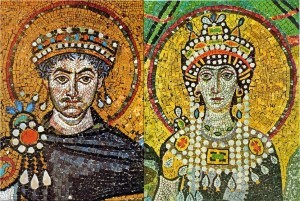 Under the reign of Justinian, the Byzantine Empire lived its most magnificient years. However a-three-day-long riot created an opportunity to overthrow the Justinian in 532. People who got rid of the high taxes and military pressure, revolted against Justinian. With the help of his wife Theodora, Justinian was able to quell the riot which was initiated by the Hippodrome’s two fractions -the Blues & the Greens. Justinian decided to resist the rebellion after Thedora’s impressive speech. ‘Purple is the best winding sheet’ is her most famous quote supposedly made by her to her husband acc. to Procopius.
Under the reign of Justinian, the Byzantine Empire lived its most magnificient years. However a-three-day-long riot created an opportunity to overthrow the Justinian in 532. People who got rid of the high taxes and military pressure, revolted against Justinian. With the help of his wife Theodora, Justinian was able to quell the riot which was initiated by the Hippodrome’s two fractions -the Blues & the Greens. Justinian decided to resist the rebellion after Thedora’s impressive speech. ‘Purple is the best winding sheet’ is her most famous quote supposedly made by her to her husband acc. to Procopius.
Both Hagia Eirene and Hagia Sophia were burned down by the rebels. Within the same year, the reconstruction of the new church began. And it was completed in five years.
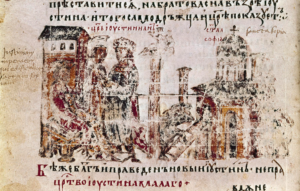
Byzantine Emperor Justinian (483-565) supervising the construction of Hagia Sophia, which only took five years. Manuscript illumination from a Slavonic copy, 1345, of the Chronicle of Manasses.
The architects of the new church were Isidorus of Miletus & Anthemius of Tralles. Actually, Isidorus was a professor of mechanics, and Anthemius was a famous mathematician. And Justinian was also pleased with their previous work: The Church of Hagia Sergios and Bachos.
“…And Anthemius of Tralles, the most learned man in the skilled craft which is known as the art of building, not only of all his contemporaries, but also when compared with those who had lived long before him, ministered to the Emperor’s enthusiasm; and associated with him was another master-builder , Isidorus by name, a Milesian by birth, a man who was intelligent and worthy to assist the Emperor Justinian.”
Despite the Justinian’s hustle, Anthemius & Isidore invented new perspective in architecture. Hagia Sophia was unique in many aspects when it was finished. Pendentives and a dome with a square base were some of the examples accomplished by them. Justinian was also so concerned about and involved in the construction process. He would rarely sleep and often control the building. He is said to have seperated the workers equally on each side of the building to make them race.
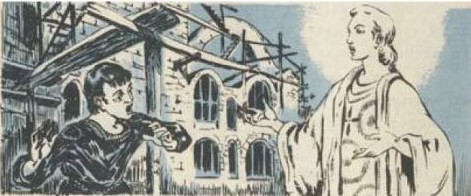 According to a myth related to those days, when the workers have a break to have a meal, they leave a boy to guard the site. A eunuch appears and tells the boy to call the workers there to make the construction finish as soon as possible and he will be watch out the church until the boy returns. When Justinian hears that, he doesn’t allow the boy to go back the church so that the angel can guard it forever.
According to a myth related to those days, when the workers have a break to have a meal, they leave a boy to guard the site. A eunuch appears and tells the boy to call the workers there to make the construction finish as soon as possible and he will be watch out the church until the boy returns. When Justinian hears that, he doesn’t allow the boy to go back the church so that the angel can guard it forever.
For the construction of Hagia Sophia, old pagan idols and edifices were plundered. Marbles were brought from distant places such as France, Egypt, Marmara Island. Justinian is remembered as the founder of Hagia Sophia . Howewer; he was named as ‘’the builder of the world’’ by Procopius for building more than 100 chuches in both Constantinople and the provinces of Asia after his conquers in both west and the east. He is also said to convert about 70.000 persons during his reign.
When Hagia Sophia was inaugurated, Justinian was so impressed and excited that after he thanked God he is said to have cried ‘’Glory to God who has deemed me worthy of accomplishing such a work! O Solomon! I have vanquished thee’’ implying the height of the dome.
Consecrated by Justinian in 537, Hagia Sophia couldn’t resist the earthquakes and both arches and the main dome collapsed in 557. Holy Table, ciborium and ambo were buried in the wreckage . Isidorus the Young constructed a new bigger dome by the order of Justinian. Even though it was reconstructed in four years, the dome of Isidorus survives today with its spectacular view. In 563, Hagia Sophia was reconsecrated by Justinian.
During the 7th century, the danger of Arab attacks continued and interactions with Arabs began. However, the attemps on the siege of Constantinople didn’t succeed.
[amazon box=”B0B776SLG6″]
In Iconoclast period (see also Iconoclasm), the images and idols were prohibited to worship. So, most of the mosaics containing a human image were destroyed and covered during the reign of Leo III. This controversy continued until the end of the reign of the last Iconoclast Emperor Theophilius. As soon as Theophilius died, his wife started renovations in churches, and made the icons reinstalled. Theodora held fast to the veneration of icons that she kept in her chambers. However, when a servant blurted out the icons of the empress to the emperor, she defended herself as she was just playing with her dolls. Theodora’s dolls are still kept at a monastery on Mount Athos and displayed annually on the Sunday of the Triumph of Orthodoxy.
During the 9th & 10th century, Hagia Sophia suffered from the earthquakes which damaged the dome and the semi domes and the arches.
In the 11th century, Byzantine Empire was suffered losses in its both the West and East lands. The Byzantine cooperated with Crusaders against Turks & Arabs. However, after the second Crusades, Crusaders failed to keep the possession of Jerusalem and couldn’t recapture it in the 3rd Crusade. The 4th Crusades went beyond its purpose and turned into the occupation of Constantinople because of the religious conflict between Catholic & Orthodox.
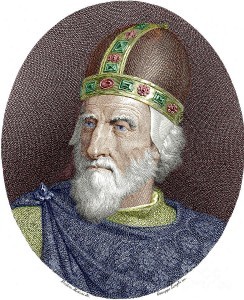 In 1204, the Crusaders, led by Enrico Dandolo- the doge of Venice, invaded the Constantinople. When Enrico Dandolo entered Constantinople with his giant navy, he was almost blind and about 90 years old. He was asked for help to place Alexius on the throne of Byzantine Empire, which led to the occupation of the city. He was notorious for his brutality and when the Byzantines took the city again, they sacked his tomb which was buried in Hagia Sophia. Today you can see a signboard written ‘’Enrico Dandolo’’ in Hagia Sophia. However; it was placed by the Ottomans in the 19th century.
In 1204, the Crusaders, led by Enrico Dandolo- the doge of Venice, invaded the Constantinople. When Enrico Dandolo entered Constantinople with his giant navy, he was almost blind and about 90 years old. He was asked for help to place Alexius on the throne of Byzantine Empire, which led to the occupation of the city. He was notorious for his brutality and when the Byzantines took the city again, they sacked his tomb which was buried in Hagia Sophia. Today you can see a signboard written ‘’Enrico Dandolo’’ in Hagia Sophia. However; it was placed by the Ottomans in the 19th century.
It was not just an invasion, the city was plundered for three days thoroughly. Crusaders also looted Hagia Sophia.
In his ‘’Chronicle of the fourth Crusade and the Constantinople‘’ Geoffrey de Villehardouin describes the sack ‘’The spoils and booty were collected together, and you must know that all was not brought into the common stock, for not a few kept things back, mangre the excommunication of the Pope. That which was brought to the churches was collected together and divided, in equal parts, between the Franks & the Venetians, according to the sworn covenant.’’
Nicetas Choniates, a Byzantine government official and historian describes the occupation of Constantinople in his work ‘’History’’ :
‘’How shall I begin to tell of the deeds wrought by these nefarious men! Alas, the images which ought to have been adored, were trodden under foot! Alas the relics of the holy martyrs were thrown into unclean places. When the sacred vases & utensils of unsurpassable art and grace and rare material , and the fine silver… the ambo of admirable workmanship, and the door…
Nay more, a certain harlot, a sharer in their quilt, a minister of furies… sat in the patriarch’s seat , singing an obscene song and dancing frequently. All places everywhere were filled full of all kinds of crime. Oh, immortal God, how great the afflictions of the man!’’
After the conquest, relics of True Cross, golden objects, chalices, plates and furnishings and even the doors were scattered all around Europe. Today, some churches in Venice , Germany and Italy are full of Byzantine belongings.
In Constantinople, a Latin Empire which could survive about 60 years, was established in 1204. Baldwin of Flanders came on the throne. However, the 4th Crusade gave the city an irreparable damage and before the Latins could restore this new empire, the Greeks captured the Constantinople mostly by chance. An open postern gate helped them enter the city. The new emperor was crowned again in Hagia Sophia in 1261.
Constantinople became an easy prey to Ottoman sieges in the 14th century. Although Bayezid who also built Rumeli Fortress besieged the city twice, all the sieges failed until the 15th century.
Ottoman Period
Sultan Mehmed II, at the age of 23 took the full advantage of the predicament of the Byzantine Empire which was in a religious conflict with the East. He was a shrewd and clever man who had also a desire to be the glorious leader whom the Muslim prophet Mohammed heralded: ‘’They Shall Conquer Constantinople. Glory be to the prince and to the army that shall achieve it’’.
The conquer lasted about 7 weeks which wore down the both sides. In fact Byzantines were in a great distress. There were many prophecies foretold that the last emperor would be named Constantine as the first had been. When the holy icon of Virgin slipped off its platform and an eclipse of the full moon which caused a-three-hour darkness was enough to make the Byzantines panic.
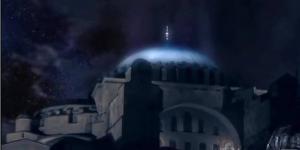
Eclipse of the full moon – Illustration
On 29 Tuesday of May, after breaking the famous chain that was stretched across the Golden Horn and fighting to the bitter end, Mehmed II entered the city. He was so saddened by the city’s devastated state, he is said to have recited a verse of Firdevsi:
“The spider serves as gatekeeper in the arch of Chosroes.
The owl plays martial music in the castle of Afrasiyab.”
He allowed his soldiers 3 days of sack of the city as a reward. They looted all buildings, churches and houses.
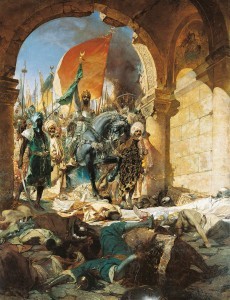
Entry of the Turks of Mehmed II (1432-81) into Constantinople, 29th May 1453, 1876 (oil on canvas), Constant, (Jean Joseph) Benjamin (1845-1902)
At the same time, having seen the betrayal of Giustiniani, the last Christian emperor – named Constantine, as prophesized before – bid farewell to his people and prayed in Hagia Sophia for begging pardon, and rode to battlefield and fought to the last drop of his blood and he was never seen again.
Felicia Hemans:
‘’And thou, O last and noblest Constantine !
Didst meet the storm unshrinking & along
Oh! Blest to die in freedom though in vain
Thine Empire’s proud exchange the grave, and not the chain … ‘’
As the famous historian Ducas narrates: ‘’ ..Three days after fall of the city he (Mehmed II) released the ships so that each might sail off to its own province and city, each carrying such a load that it seemed each would sink. And what sort of cargo? Luxurious cloths and textiles , objects and vessels of gold, silver, bronze, and brass, books beyond all counting and number, prisoners including priests and lay persons, nuns and monks. And having loaded all books, reaching unto a number beyond numbering, upon carts, they scattered them throughout the east and west. For one nomisma ten books could be bought Aristotelian, Platonic, theological, and every other kind. And all the icons were thrown into the flame…’’
It is said that when Mehmed II entered Hagia Sophia, he bent down to take a handful of earth and poured it on his head to thank God. It is also said that he destroyed the Altar. The Sultan converted the church into a mosque at once. Although Sultan made many restorations & renovations in new Hagia Sophia, he preserved many mosaic. When Sultan saw a mosaic of Christ first, he thought him to be a venerable man, not a prophet. Mehmed II built a minbar, a mihrab, a madrasa and a wooden minaret in Hagia Sophia within the years. However, the Big Cross on the dome and the bell of the tower were removed. Because of the conquest of Constantinople-later turned into Istanbul, Mehmed II took the title ‘’Conqueror/Fatih’’.
Hagia Sophia underwent many changes in the reigns of each Ottoman Sultan. The first wooden minaret of Mehmed II was rebuilt by Selim II. Sultan Bayezid II erected another minaret with brick stone on the southeast side of the mosque minaret. The other two minarets were built by Selim II and Murad III both of whom commissioned Sinan the Grand Architect .
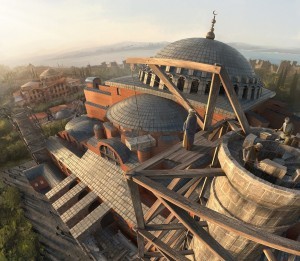
After conquest of Istanbul Ottomans decided to use Hagia Sophia which is an ancient basilica as a mosque. Image tells the story of building minarets by Sinan the Grand Architect. (Credit: Taha Alkan)
The minarets would also symbolize the power of the empire and for Hagia Sophia they also provide extra buttressing to the structure. Architect Sinan also built the massive buttresses on the north and east side the mosque.
Suleyman the Magnificient put two giant candlestick beside mihrab, taken from his Hungarian campaign. He also put frames on the southerly pier, ‘’Haste ye to prayer ere the other hath passed.’’ to the north, ‘’ Haste ye to repentance ere death cometh.’’
Later, a marble muezzin platform (mahfil) and alabaster urns were incorporated into mosque during the reign of Murad III. Mahmud I added an imaret, a school for children (madrasa) a fountain (şadırvan) in the courtyard, and a library adorned with Iznik tiles and bronze grilles inside the mosque.
Mosaics (see also mosaics of Hagia Sophia) were mostly covered with whitewash or plaster. The inaccessible ones were exposed to natural wear. And some of them were sold by inferior officials of the mosque.
In 1847, a comprehensive restoration was started by Fossati Brothers, whom were commissioned by Abdulmejid. Swiss architects Giuseppe & Gaspare Fossati had been the official architects of the court of St. Petersburg before they came to Istanbul. Firstly, they uncovered the glorious mosaics hidden before and then showed them to the Sultan who thought them to be made by Fossatis and got angry at the Brothers. Later, he learned that mosaics were covered by his ancestors because of all these golden stuff . However, Sultan couldn’t dare to display of this Orthodox images and ordered Brothers to cover them again until the circumstances would allow them to be exhibited.
Fossatis made great alterations in Hagia Sophia. They designed the Sultan’s lodge with Byzantine columns and huge bronze chandeliers.
Mihrab and minber were renovated. Around the dome’s base an iron chain was placed and around the crown of the dome an inscription was made by M. Izzet Efendi who was also the calligrapher of the 8 wooden green roundels bearing the names of God, Mohammed with his grandson Hasan & Hussein; and the four caliphs.
After a-two-year restoration, Hagia Sophia was inaugurated again in 1849.
During the Balkan Wars in 1912, Hagia Sophia served as a hospital for cholera patients. And in the World War I , Turks were about to explode the Hagia Sophia Mosque in order not to give it to Greeks again.
Hagia Sophia as a Museum
The Turkish Republic was proclamated by the great leader Mustafa Kemal Atatürk ( see also Atatürk) in 1923.
In 1931, an American archeologist Thomas Whittemore ( see also Th. W.), who founded the Byzantine Institute of America, asked Atatürk’s permission for uncovering the mosaics of Hagia Sophia. After getting the permission, the works on mosaics started in 1932. This compelling task lasted for about 15 years.
As a step on the way of a secular country, Hagia Sophia was converted into a museum by the order of Atatürk and reopened in 1935.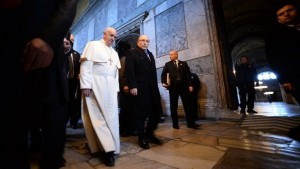 In 2014, Pope Francis gave a visit to Hagia Sophia after a long time.
In 2014, Pope Francis gave a visit to Hagia Sophia after a long time.
In ‘’ the Travels’’ of Ibn-i Battuta who visited Hagia Sophia in the 14th. Century, he makes a mention of the visits of the Pope in those years ‘’ the Pope comes to it once in the year. When he is at a distance of four nights’ journey from the town the king goes out to meet him and dismounts before him. When he enters the city, the king walks on foot in front of him, and comes to salute him every morning and evening during the whole period of his stay in Constantinople until he departs.’’.





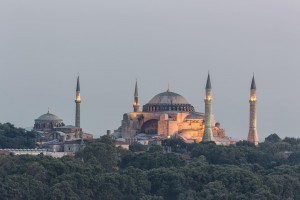

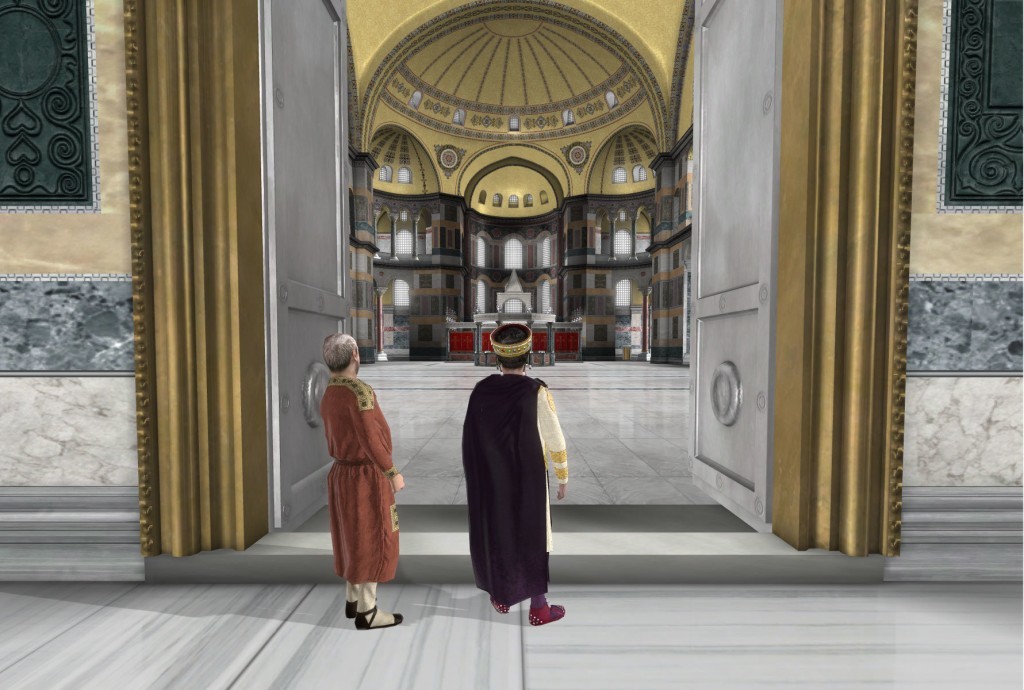

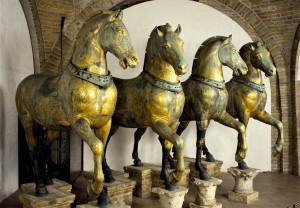
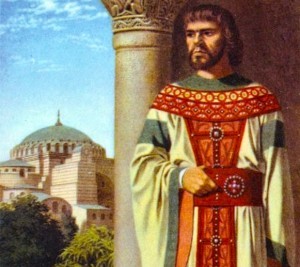
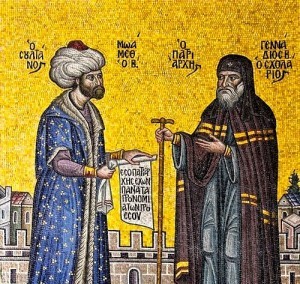
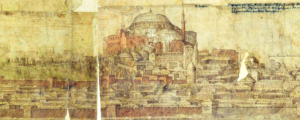

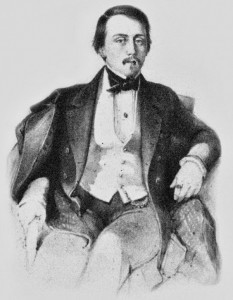
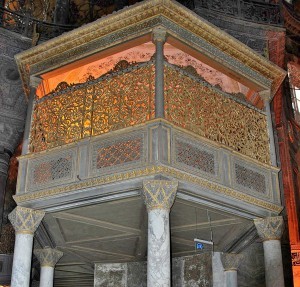
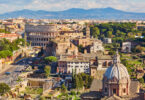
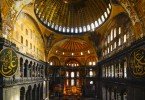
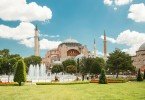
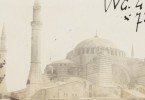
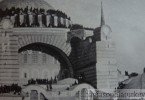
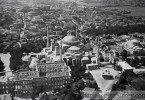
Did sultan mehmet 2 paid the price for hagia sophia to the christians??
Orthodox Christians its time to back Hagia Sophia in Church.Attack to west Turkey and Istanbul city.Back in Constantinopol.
Why attacking? We are all here for peace, aren’t we? And then we are blaming other people for being terrorist. Stop being violent and try to solve problems like humans.